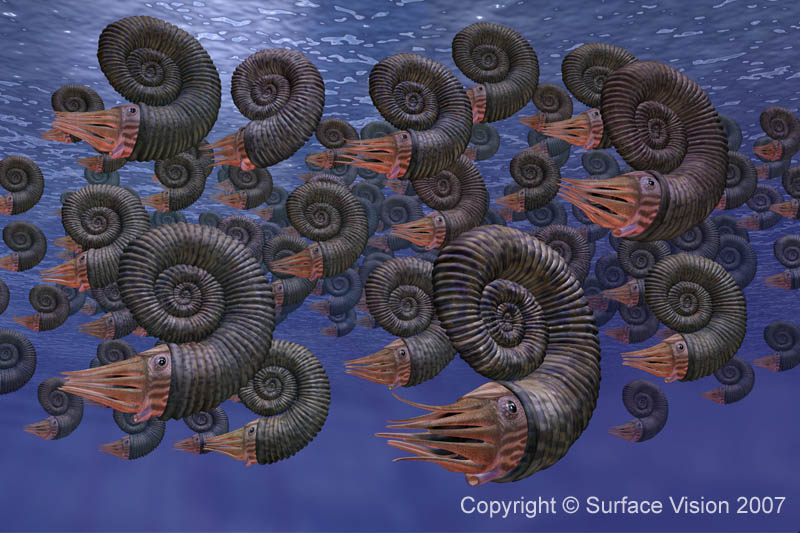AMMONITE SEA
Before Mary Anning of Lyme Regis discovered the first Ichthyosaur fossil, which gave rise to the science of palaeontology, people believed Ammonite fossils to be petrified snakes. Ammonite fossils fitted with carved snake heads were sold to pilgrims, presumably as a charm to ward off the real thing. There is also a legend at Whitby, in Yorkshire, of St. Hilda, who turned a plague of snakes to stone. One has to wonder how much this story is based on finding Ammonite fossils in the area. It is also speculated that the discus used by the ancient Greeks in their Olympic games was actually an Ammonite fossil.
We now know that Ammonites were a hugely successful aquatic animal, a type of mollusc, related to squids, that evolved into many different types and varied in size from less than a centimetre to huge creatures whose shells reached some 2 meters across. Ammonites first appear over 400 million years ago and survived in various forms right though to the end of the Cretaceous period 65 million years ago. The Nautilus is the animal today that bears the closest relationship to the Ammonite.
The picture shows a group of Ammonites swimming in the warm waters of a Jurassic sea some 200 million yeas ago, before land movements caused conditions to change and the area eventually became the coastline of Lyme Regis, part of the Jurassic Coast Heritage Site.

